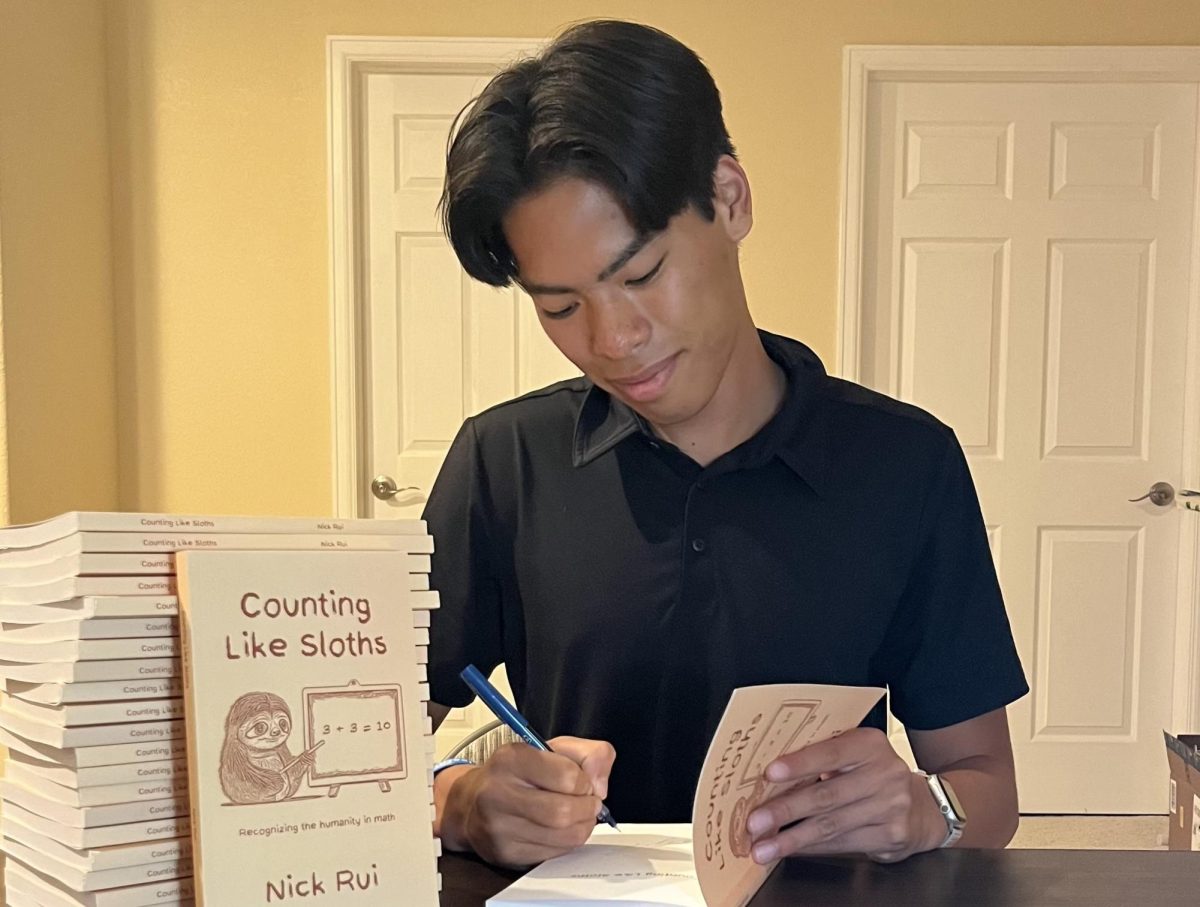Some students like math, some like it a lot. Maybe they join the math club or tutor at middle schools. But even among that group, not many will write, design, and publish an entire book about it.
But that’s exactly what senior Nick Rui did.
Rui began the writing process in Nov. 2022, and on Aug. 8, 2023, Counting Like Sloths was published on Amazon, where it quickly became the #1 new release in the “Counting and Numeration” category.
“It’s really an in depth analysis of very basic mathematical ideas,” Rui said. “Plus, minus, why shapes are the way shapes are.” In the book, Rui also goes in depth on ideas like PEMDAS, Fahrenheit, and base ten.
According to Rui, he was inspired by writers like David Grann (most famously the author of Killers of the Flower Moon) to take a narrative approach to the book.
The project is an extension of a product of Rui’s passion for math. It’s based on his TikTok, @nicksnumerals, where he posts videos, solving homework problems for AP Physics and AP Calculus. He recently reached 5000 followers.
“I’ve had videos go completely viral,” Rui said. “It’s really interesting to see how my content can reach a large audience on TikTok.” He proudly describes himself as a tutor, using his platform to help other students through high school-level math.
His teachers have noticed his unique enthusiasm for STEM. “He not only is passionate about mathematics, but about how we teach and learn math,” said math teacher Rob Matuschek, who has taught Rui in three separate classes over the last two years. “He is interested in the work I do in instructional coaching and is often talking about the best ways to learn and teach.”
Unlike his video platform, where he focused on calculations, Rui wanted to take on mathematical ideas differently, showing the historical and anthropological ideas behind the basic structures of math, basic structures that are an unconscious thought for most. The book’s catchphrase is “Math has been humanized.” This is where he got the idea for a title.
“Sloths are slow,” Rui said. “And you can see throughout the entire book, I’m going through these very basic ideas, stuff that you would maybe spend like five minutes doing in a math class.”
But the title has a double meaning. If a three-toed sloth invented a numeral system, it would look completely different from our base-ten counting. It would be based on the sloth’s six toes rather than our ten fingers. He explored that issue in chapter two.
Matuschek also cited Rui’s explanation of the speed of light and his ability to teach and explain effectively, even when handling more complex ideas. “Nick’s patience and expertise in presenting this material is a reflection of his wonderful passion for the subject,” Matuschek said.
Throughout the book, Rui also used tables and charts to assist his writing. “I will say that my writing process might be different from other writers,” he said. “Some chapters…I put a lot of diagrams into. How do I make a table and how do I design it? I was writing while designing which I thought was a very interesting process.”
Rui, in an effort to lessen his workload with senior year and college applications on the way, had to move quickly in an effort to finalize and publish the book before the year started, so he was less proud of the later chapters.
“There’s definitely some things that I really wanted to write about that I couldn’t write about because there were time restraints,” Rui said. “I would say the ending is a bit rushed. But overall, I’m really proud of it.”
He wanted to emphasize, with his book, that there’s more to math than what we learn in class.
“The idea of math is much more complicated and interesting,” Rui said. “And it’s not really much different from your history class, or your social science class, or even your art class.”
Rui hopes that his book can show math in a different way, rather than how it is learned in schools. “There’s a very negative connotation to [math] in general, at least in the American education system,” he said. “What I wanted to do was show that there’s more than just counting and adding and subtracting and doing the same old problems.”









